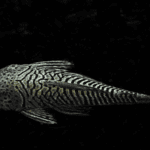Bottom dwelling scavengers like catfish and loaches prove extremely popular aquarium additions valued for substrate cleaning services. However, housing these fish together with other common community species poses compatibility considerations requiring forethought to ensure successful coexistence.
Temperament Factors
While personalities differ between bottom feeding fish types, most exhibit relatively peaceful behaviors.
Generally Non-Aggressive
Bottom feeders rarely bother well-selected tankmates without provocation since their primary focus involves foraging left over foods and grazing algae. Less competition for resources occurs than mid and upper dwelling species.
Actual Aggression Triggers
However most bottom dwellers still exhibit territorial instincts around securing prime locations, potential mates and especially limited food sources. Cramped tanks and pairing combative species sparks conflicts.
Vulnerabilities
Their niche position also exposes bottom feeders to potential harassment by more aggressive choices.
Slow Moving Targets
Maneuverability limitations make sinking foods easier targets for faster moving fish to steal meals before reaching bottom levels where slower paced bottom feeders patrol. Ensure all get fed.
Fin Nipping Problems
Long flowing fins on species like ancistrus plecos tempt obsessive fin nippers like tiger barbs. Avoid combining vulnerable species with known fin nippers.
Compatible Tankmate Selection
Choosing appropriate tankmates facilitates harmonious integration.
Upper Level Schoolers
Fast moving schooling top and mid range fish like tetras, rasboras and small barbs make excellent companions. Their water column position and behaviors pose minimal competition.
Bottom Species Schools
Likewise keeping conspecific bottom dwellers together in dedicated species groups helps curb infighting while allowing natural shoaling behaviors. This also prevents hybridization.
Tank Setup Considerations
Properly arranged aquascapes aid reducing territorial aggressions.
Provide Separate Feeding Stations
Position driftwood, rock piles or plant barrier at opposite tank areas to create distinct dining zones for various fish groups. This allows everyone secure meal access.
Select Compatible Plants
Avoid plants bottom feeders easily uproot like glossostigma or delicate stems. Hardier choices like anubias, java fern and moss instead get grazed safely.
Conclusion
While rarely overtly aggressive, bottom feeding fish thrive best housed with appropriate tankmates selected mindful of known temperament reputations and vulnerabilities. Choosing peaceful mid-high water column dwellers, furnishing separate dining spaces, and selecting hardy plants able to withstand foraging prevents needless conflicts establishing conditions facilitating successful coexistence.
FAQs About Bottom Feeder Compatibility
1. What fish get along with Cory catfish?
Small schooling tetras, rasboras and danios, along with surface fish like hatchetfish and bettas tend to ignore peaceful cory cats, making great tankmates for them. Avoid known fin nippers.
2. Do plecos eat other fish?
Common plecos only consume invertebrates and plants. However, carnivorous ancistrus and predatory plecos species could prey on very small fish. Never keep pint-sized tankmates with largemouth bass or vampires plecos.
3. Can you put a betta with Cory catfish?
Yes, given sufficiently sized 10+ gallon tanks, passive bettas and small corydoras species like pygmies or hastatus make excellent tankmates. Avoid fin nippers instead like tiger barbs that may bully slower moving bottom feeders.
4. Do Cory catfish fight each other?
While corydoras shoal naturally together, keeping fewer than 5-6 individuals of a single species together risks relentless infighting from lack of proper group dynamics. Maintain corydoras groups minimum 6 individuals ideally.
5. What fish bother Cory catfish?
Larger territorial or aggressive fish like cichlids, oscars and Jack Dempseys often bully smaller cory cats when housed together by denying them foods access or even attacking them. Avoid combative tankmates prone to harassment.




